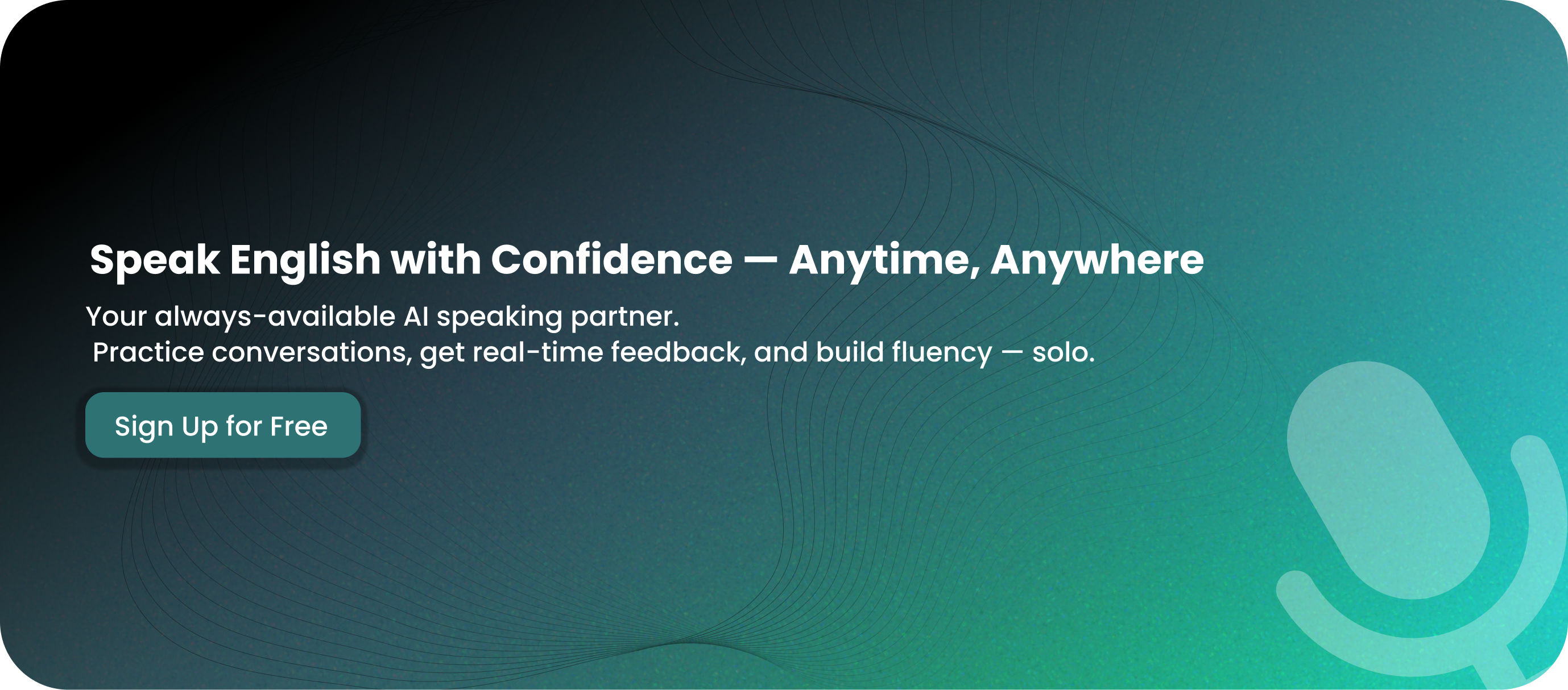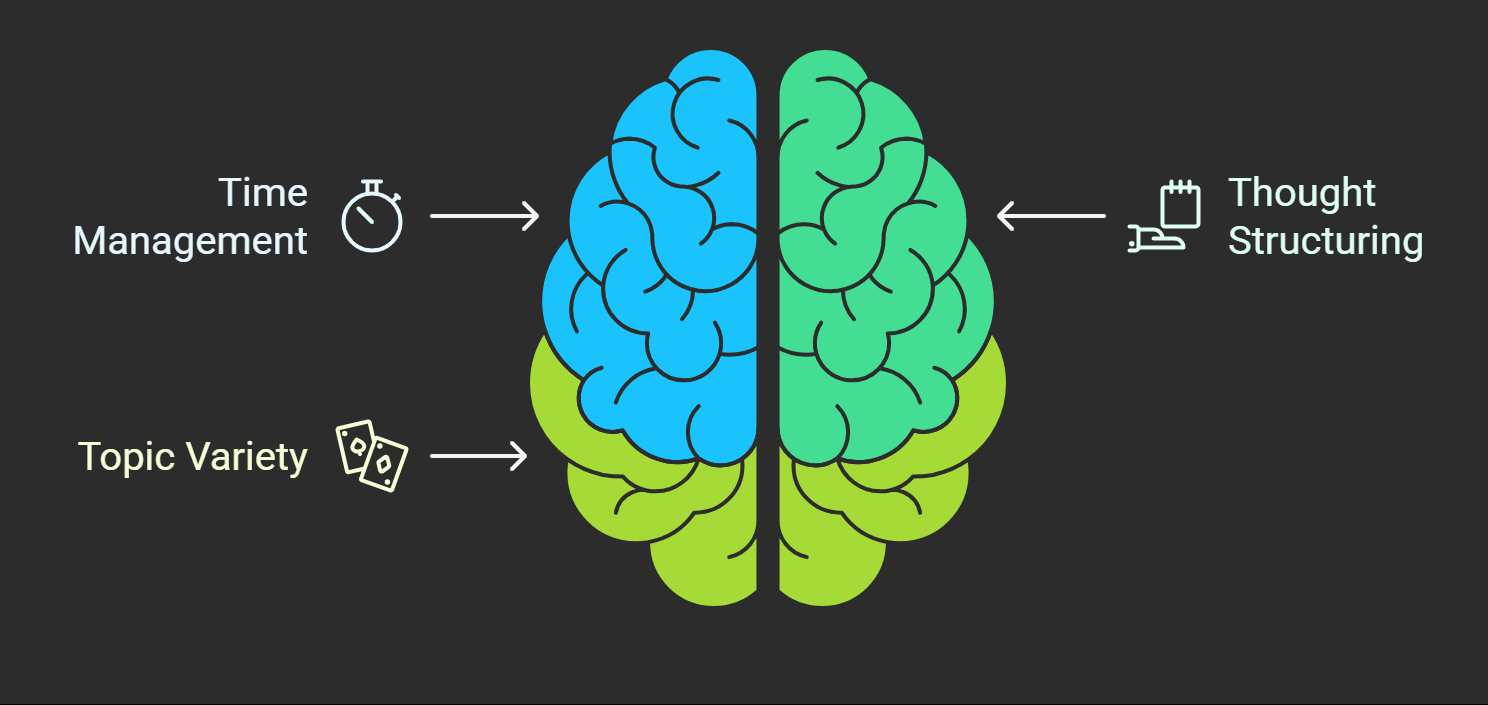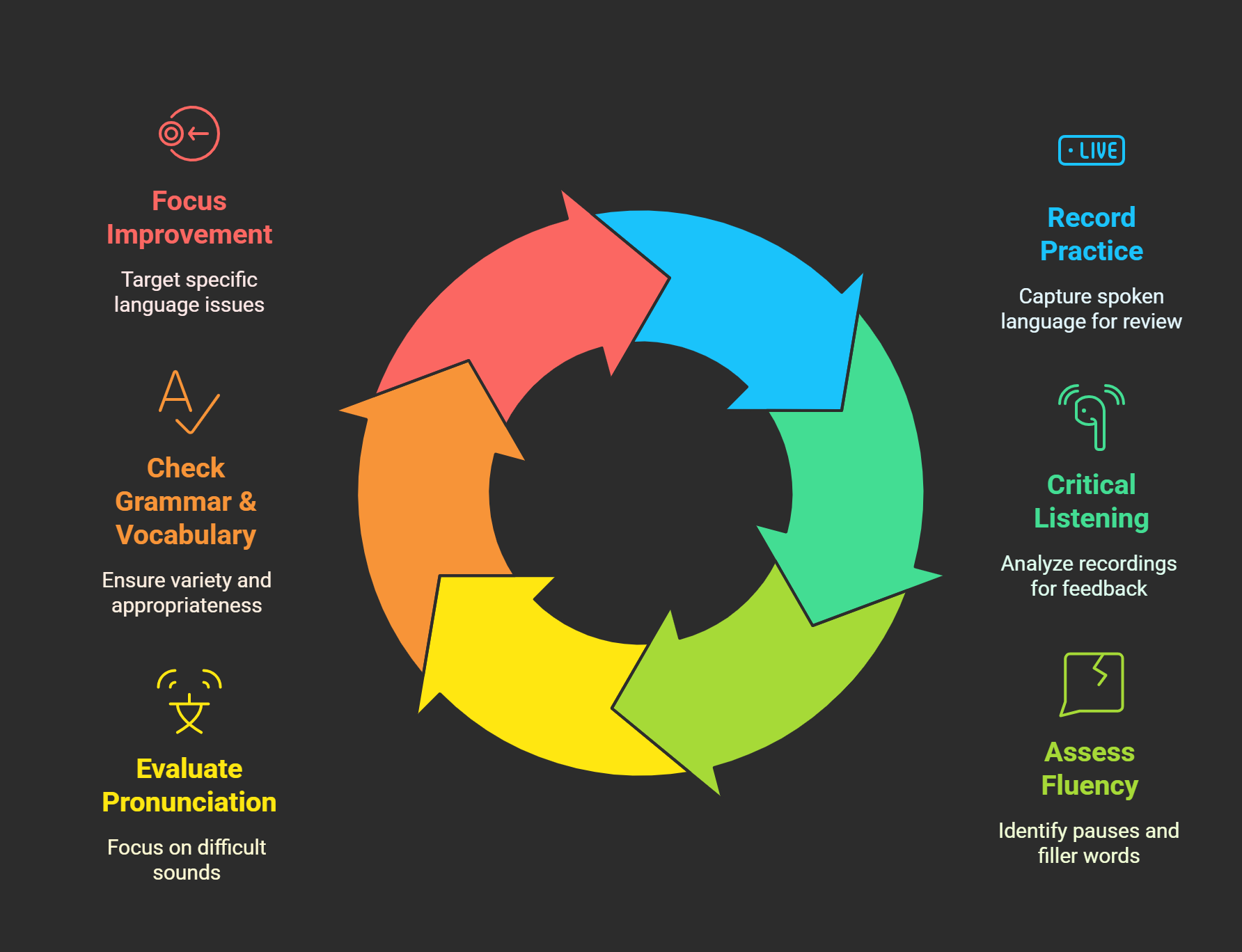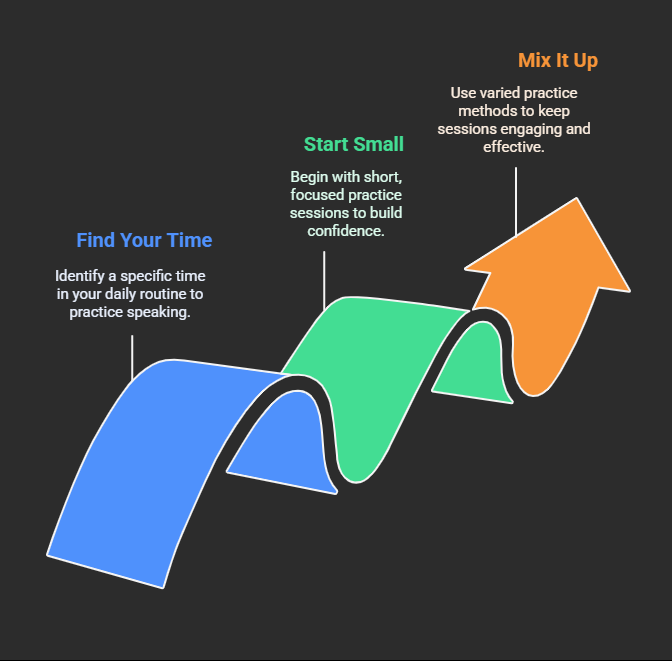Feeling the pressure of the IELTS speaking test? You know practice is key, but maybe finding a tutor isn’t practical right now. It can feel a bit lonely, staring at those sample questions, wondering if you’re really improving on your own. That little voice of doubt can be loud, can’t it? “Am I saying this right?” “Is my pronunciation okay?” “Will I freeze up?”
Take a deep breath. You can build a strong, effective IELTS speaking routine without a tutor. It takes consistency and the right approach, but it’s absolutely achievable. Combining proven methods like using cue cards, recording yourself, and building a solid daily habit forms the core of successful solo practice.
Let’s explore how you can weave these elements together to create a daily routine that builds confidence and gets you ready for test day. (And stick around till the end – we’ve got a little something to help you map it all out!)
Getting Smart Feedback When Practicing Alone
One of the biggest hurdles when you practice speaking without a tutor is the lack of immediate, objective feedback. You can listen back to recordings (and you absolutely should!), but sometimes it’s hard to know exactly what to listen for or if your self-assessment is accurate. Are you really pronouncing that sound correctly? Is your pacing natural?
This is where technology can offer a helping hand. AI-powered tools, such as BetterSpeak, are designed to analyze your speech and provide specific insights. They can act like a digital guide, offering feedback on areas like:
- Pronunciation Accuracy: Pinpointing specific sounds you might be struggling with.
- Fluency: Measuring your speaking pace, pauses, and use of filler words.
- Grammar and Vocabulary Use: Highlighting potential errors or areas where you could use more varied language.
Using a tool like this doesn’t replace the other practice methods, but it complements them by providing data points you might otherwise miss, helping you focus your efforts more effectively during your solo IELTS speaking routine.

Embrace the Power of the Cue Card
The Part 2 cue card can feel intimidating, but it’s actually a fantastic tool for solo practice. Don’t just read it – use it like you will in the test.
- Time Yourself: Set a timer for 1 minute of prep time and then 2 minutes of speaking. Get used to the clock ticking.
- Structure Your Thoughts: Practice jotting down keywords during your prep minute – don’t write full sentences! Focus on introduction, key points, and a concluding thought.
- Variety is Key: Use a wide range of official or practice cue cards. Don’t just stick to topics you find easy. The goal is to become comfortable thinking and speaking on the spot about anything.

Regularly practicing with cue cards builds familiarity with the format and trains your brain to structure answers effectively under pressure.
Your Smartphone: Your Unofficial Practice Partner
Okay, hearing your own voice can be cringe-worthy at first – we all feel it! But recording yourself is one of the most powerful things you can do when practicing alone.
- Record Everything: Whether it’s a Part 2 response, answers to Part 1 questions, or even just talking about your day in English, hit record.
- Listen Critically (But Kindly!): Play it back. What do you notice?
- Fluency: Are you pausing too much? Using too many filler words (“um,” “ah,” “like”)?
- Pronunciation: Are there specific sounds you struggle with?
- Grammar & Vocabulary: Did you use varied sentence structures? Did you use appropriate vocabulary?
- Focus on One Thing: Don’t try to fix everything at once. Maybe one day you focus only on reducing filler words, and the next day you focus on using past tense correctly.

This self-correction loop is invaluable. It’s like being your own mini-tutor, spotting areas for improvement you might otherwise miss.
Consistency Beats Intensity: Build the Daily Habit
Trying to cram hours of practice into one day isn’t as effective as short, consistent daily sessions. Building an IELTS speaking routine without a tutor means making it part of your day.
- Find Your Time: Is it 15 minutes during your morning coffee? 20 minutes before bed? Link it to an existing habit.
- Start Small: Even 10-15 minutes of focused speaking practice daily is better than nothing. You can build up as you get more comfortable.
- Mix It Up: Don’t just do cue cards every day. Rotate between Part 1 questions, Part 2 practice, and maybe even some Part 3-style discussions (you can record yourself arguing both sides of an issue!).

The goal is to make speaking English feel less like a “test practice” chore and more like a natural part of your routine.
You’ve Got This!
Building an IELTS speaking routine without a tutor requires self-discipline, but it’s incredibly empowering. By consistently using cue cards, recording yourself, making it a daily habit, and leveraging helpful tools for feedback when needed, you can make significant progress.
Remember to be patient and kind to yourself. Progress isn’t always linear. Celebrate the small wins, keep practicing, and build that confidence one day at a time.
Ready to start structuring your practice? Combining these methods, perhaps testing out a tool like BetterSpeak to get that AI feedback, can make a real difference. Good luck – you’re capable of more than you think!
(Psst… Want a simple template to plan your daily solo practice? You can grab our downloadable IELTS Solo Practice Planner here! [Download the planner here.])